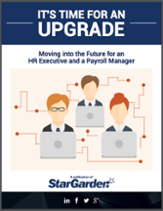Sustainable Scheduling: Putting People First

At the International Joint Conference held in Buenos Aires, Argentina last year, business and technology leaders including Elon Musk, Stephen Hawking, Bill Gates, and Steve Wozniak shared their apprehension that technological innovations may actually be creating a harmful working environment for employees. Although prominent thought leaders forewarning about technological advancement may seem grim recent events indicate they might be on to something.
On-Call Scheduling: Efficiency at Employees’ Expense
Victoria’s Secret recently found itself in some trouble due to on call scheduling, a practice that is prevalent in the retail and services sector in the US and Canada. Under this model, retailers require part-time workers to call in three hours ahead of their scheduled shift to check in if they are required to come in for work. This practices saves money for the business, but increases stress for the employees because of the opportunity cost. Employees can not plan other engagements during the scheduled time, precluding enrolment in classes or other paid work; many must also spend money for child or adult care that is unrecoverable when they cancel at such a late hour. Although employees complained about the loss of personal autonomy caused by that practice, many remained employed fearing they had no other choice.
Victoria’s Secret faced a class action lawsuit by workers in California, as well as an investigation by the New York State Attorney General’s Office. The crux of the discussion was whether on-call employees should be paid even if they are not required to work the shift. Plaintiffs argued that they were entitled, under California law, to at least two hours of pay for each “on-call” shift. California is one of eight U.S. states (plus the District of Columbia) that currently have “reporting time” pay laws in place, which require that employees be paid for a certain minimum number of hours just for reporting to work. California’s law specifically provides that an employee must be paid for at least two hours of work at his or her regular rate of pay for each workday that he or she is required to report to work, even if the employee is not actually put to work.
A ruling in the favor of the plaintiffs, entitling them to millions of dollars in back pay and penalties, would have made it unattractive for employers to overbook employees as backups for on-call shifts in the retail industry. As Victoria’s Secret was widely attacked in the press, and rather than risk the hit to its bottom line, it agreed to a settlement with outstanding claimants and changed its scheduling policy to end the practice. A number of other major U.S. retailers, including J. Crew, Urban Outfitters, Abercrombie & Fitch, Bath & Body Works, and Gap, have also voluntarily ended the practice.
Scheduling at the Speed of Technology
This shift in policy among numerous major retailers certainly brings scheduling practices into the spotlight. Significantly, it is valuable to explore how advances in software systems allow organizations to test the boundaries of employee availability. Harnessing IT in the way Victoria Secret did is an example of the power of big data and real time analytics, which allows organizations to continually analyze and optimize staffing levels. While corporations using these practices might have been able to save money, employees (and their attorneys) labeled it “wage theft.” This resulted not only in the prospect of fines, penalties, and lawsuits, but also significantly dampened employee morale.
Technological advancements usually surpass the speed at which policies and regulations are formed in organizations. For example, as plaintiffs argued in the Victoria’s Secret case, “report for work” no longer necessarily means being “physically present” at the office location, since technology makes it possible to remain so remotely connected. Indeed, increasing number of people are telecommuting, or at the least replying to emails during vacations and holidays. While government regulations are usually late to sync up with the latest technological advancements, it is still beneficial for organizations to think ahead and see where future regulations may cause roadblocks and prepare accordingly.
Most importantly, the main lesson here is to consider exactly how and where technology will be used in an organization. Information systems are powerful tools, and the benefit or detriment of each depends on how it is used. The same technology that creates automation, saving employees from manual tasks and repetitive work, can also create a scenario where people become secondary to the scheduling algorithms and analytics. It is vital to consider the impact technology will have on the employees who support the many operations.
The function ofHuman Resources as organizations integrate more advanced technologyis a complex one. When there are a lot of things that can be automated the role of HR leaders becomes even more significant. In pursuit of short-term goals, companies can end up compromising long-term strategy and sustainability. It is important to carefully consider the allocation of resources in an organization and make strategic decisions for the use of these tools. Ideally, technology can be harnessed to make it a competitive advantage, without compromising the social responsibility of an organization to the wellbeing of its employees (and the long-term benefits of promoting employee engagement). At the end of the day, modern systems are great -- but they are only as good as the people using them.
StarGarden’s integrated IT solutions have been designed with your employees in mind. A carefully considered software solution can help re-humanize your workplace, helping you to achieve your long-term strategic goals. Contact us today to find out how you can get the most out of your HR information systems investment with our most powerful and user-friendly integrated HR system, StarGarden HCM 5.0, absolutely free.

